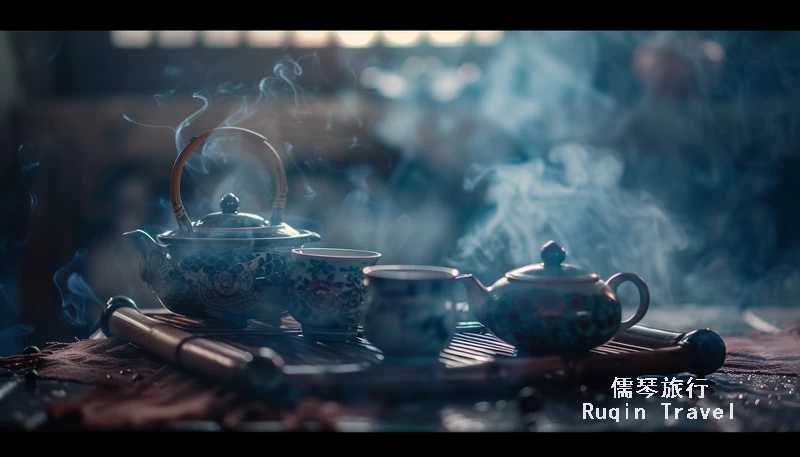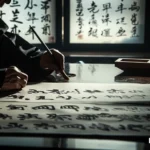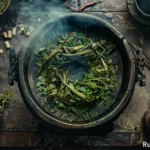Exploring the rich traditions and customs of China often leads to the fascinating world of tea. The Traditional Chinese Tea Ceremony, known as “Gongfu Cha,” is a significant cultural practice. This ceremony is not just about drinking tea; it’s a ritual that embodies respect, connection, and mindfulness.
The History and Significance of Chinese Tea Ceremonies
The roots of the Chinese tea ceremony date back over a thousand years. Tea has been a part of Chinese culture since the Tang Dynasty (618-907 AD). Initially, tea was used mainly for medicinal purposes. Over time, it evolved into a sophisticated social and cultural activity.
The ceremony reflects Chinese values of harmony, respect, and tranquility. Furthermore, it emphasizes the beauty of simplicity and the importance of detail.
Key Elements of the Chinese Tea Ceremony
Gongfu Tea Ceremony Set
A proper Chinese tea ceremony requires specific tools. The Gongfu tea ceremony set is essential. It typically includes a small teapot, a tea pitcher, aroma cups, drinking cups, a tea tray, a tea strainer, and a tea towel. Each item has its purpose and significance in the ritual.
- Teapot: Usually made of Yixing clay or porcelain, it is used to brew the tea.
- Tea Pitcher: This vessel holds the brewed tea before it is poured into cups.
- Aroma Cups: These tall, narrow cups are used to appreciate the tea’s fragrance.
- Drinking Cups: These small cups are for drinking the tea.
- Tea Tray: This tray catches any spills during the ceremony.
- Tea Strainer: Used to catch tea leaves while pouring the tea.
- Tea Towel: For wiping and cleaning during the ceremony.
Choosing the Tea
Selecting the right tea is crucial. The ceremony commonly uses oolong, green, or black tea. Each type has its unique flavor, aroma, and brewing requirements. Oolong tea is popular for its rich and complex taste, making it a favorite for ceremonies.
Steps of the Gongfu Tea Ceremony
Preparing the Teaware
First, gather all the necessary teaware. Begin by rinsing the teapot, cups, and tea pitcher with hot water. This step warms the teaware and ensures cleanliness.
Measuring the Tea Leaves
Next, measure the tea leaves. Generally, a small amount of tea is used, about one-third of the teapot’s volume. Place the tea leaves into the teapot.
Rinsing the Tea Leaves
Pour hot water into the teapot and quickly pour it out. This rinse awakens the tea leaves and removes any impurities. It also prepares the leaves for brewing.
Brewing the Tea
Pour hot water into the teapot again. Allow the tea to steep for a short time, usually 20 to 30 seconds. The brewing time varies based on the type of tea and personal preference.
Pouring the Tea
Pour the brewed tea into the tea pitcher. Then, distribute the tea evenly into the aroma cups. Next, transfer the tea from the aroma cups to the drinking cups. This method helps to fully appreciate the tea’s fragrance before tasting it.
Enjoying the Tea
Hold the drinking cup and take a moment to smell the aroma. Then, take small sips, savoring the flavor and texture. The experience should be slow and mindful, allowing you to fully appreciate the tea’s qualities.
Cultural Significance and Occasions
Chinese Wedding Tea Ceremony
The tea ceremony also plays a vital role in Chinese weddings. Known as the Chinese wedding tea ceremony, this ritual symbolizes respect and gratitude. The bride and groom serve tea to their parents and elders, acknowledging their roles in their lives. It is a moment of deep emotional significance, reflecting filial piety and family unity.
Social and Meditative Practice
Beyond weddings, the tea ceremony is a common social activity. Friends and family gather to share tea, fostering connection and communication. Additionally, it is a meditative practice. The deliberate and careful steps encourage mindfulness and relaxation.
Tips for Participating in a Tea Ceremony
Show Respect
When invited to a tea ceremony, show respect to the host. Dress appropriately and arrive on time. During the ceremony, follow the host’s lead and observe their instructions carefully.
Be Mindful
Participate with a calm and open mind. The ceremony is a time for quiet reflection and appreciation. Avoid distractions and focus on the experience.
Appreciate the Details
Take note of the intricate details. Each movement and gesture in the ceremony is meaningful. From the way the tea is poured to the arrangement of the teaware, every detail has significance.
This guide provides a comprehensive overview of the Traditional Chinese Tea Ceremony. It combines historical context, detailed steps, and cultural significance to offer an informative resource for foreign tourists. By following the tips and appreciating the traditions, visitors can fully immerse themselves in this ancient practice. Check out China Cultural Insights for more informaiton.



